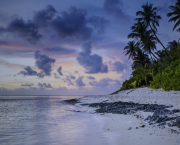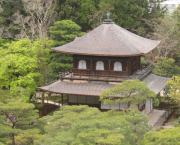
Reservations For Nature, Entry Fees For Cities: Is Mass Tourism Reaching A Dead End?
 4 min
4 min
Reservations For Nature, Entry Fees For Cities: Is Mass Tourism Reaching A Dead End?
Freedom and spontaneity. That’s what made me fall in love with campervan travel. The freedom of driving anywhere and anytime you want with your home on wheels, choosing the next city to visit or hike to conquer depending on the weather, your mood or the best moment to avoid the crowds.
Setting out for 14 months across Europe with my partner in our trusty van “Foxy,” we had a broad idea of our itinerary but never planned anything too much in advance. There’s nothing more exciting than discovering by surprise a majestic waterfall, a picturesque village or a beautiful turquoise lake on the side of the road — and to see them for the first time with our eyes, without having first checked pictures on a tourism website or on social media.
Imagine our reaction, then, when as we were traveling in northern Spain, stopping to take a look at the Playa de las Catedrales (known for its natural arches and caves, which can be seen only at low tide), we were told we needed to make a reservation first. Booking a slot to visit a beach was a first for us.
Entering into a new era of mass tourism, this booking method is becoming more and more common for natural sites. In southern France, next to the city of Marseilles, the Parc National des Calanques has introduced a reservation system this summer to limit visitors to 400 a day and preserve the creeks that are eroding rapidly.
Alongside these new reservation systems is the growth of tourism fees, for both natural sites and popular cities, and even countries. In the past few years, several national parks in the United States have implemented lotteries for their most visited sites, from The Wave in the desert landscape of Utah’s Coyote Buttes to Half Dome, Yosemite’s most famous attraction.
The tiny nation of Bhutan has recently announced it would reopen to international tourists in September for the first time since the pandemic hit, now charging them with a Sustainable Development Fee of $200 per tourist per night — tripling the amount of the fee that had been implemented for three decades. For the South Asian country, famous for its scenic natural beauty, the new fee is a way to offset tourists' carbon impact. The Italian city of Venice will also oblige day-trippers to make reservations and pay a fee ranging from €3 to €10 from January 2023, to better manage visitors in the historic center.
What does this mean for the future of tourism and travel? As tourist numbers are growing around the world and natural sites are suffering damage because everybody wants to snap the same Instagram picture from the same spot, it seems natural to protect fragile ecosystems or historic monuments by minimizing human impact and reducing traffic.
Yes, mass tourism is a real problem with devastating environmental consequences that needs to be addressed. But how do we do it without other kinds of human impact?
If tourism fees are increasingly adopted it is bound to deprive some people from traveling simply because they can’t afford it. Will the Grand Canyon or the Egyptian Pyramids one day be reserved for only the wealthiest among us?
For spontaneous travelers like me, the whole booking and planning system necessarily ruins the whole experience. Well, almost. At least, with Foxy we know we’ll always have the option to jump back behind the wheel, and head straight for the road less traveled.
— Anne-Sophie Goninet
[Photo: Foxy_the_van via Instagram]









 English
English
 Français
Français
 Deutsch
Deutsch
 Italiano
Italiano
 Español
Español



 Contribuer
Contribuer



















 Tu peux soutenir les auteurs qui te tiennent à coeur
Tu peux soutenir les auteurs qui te tiennent à coeur





